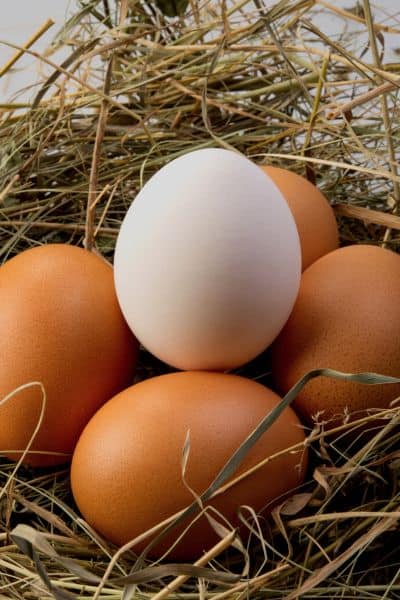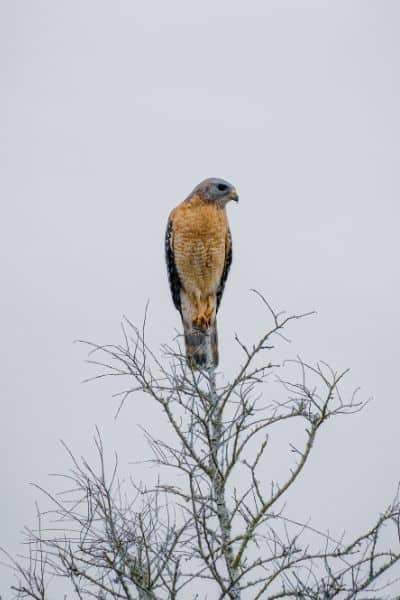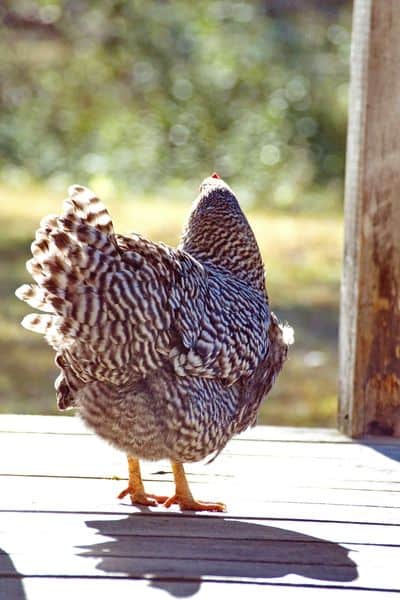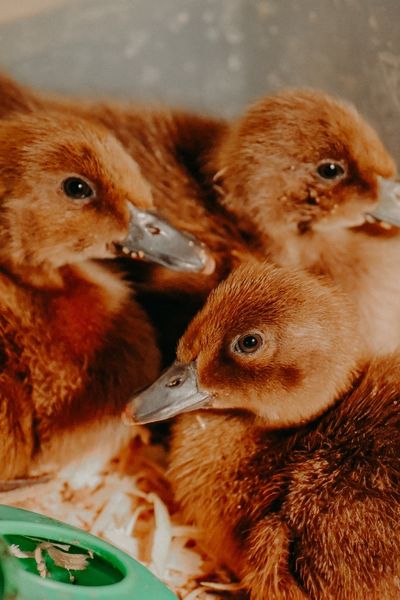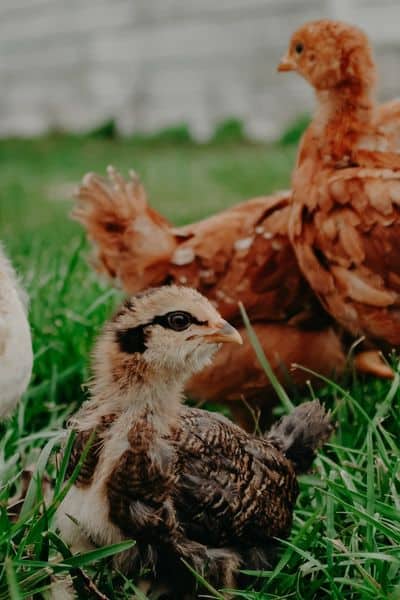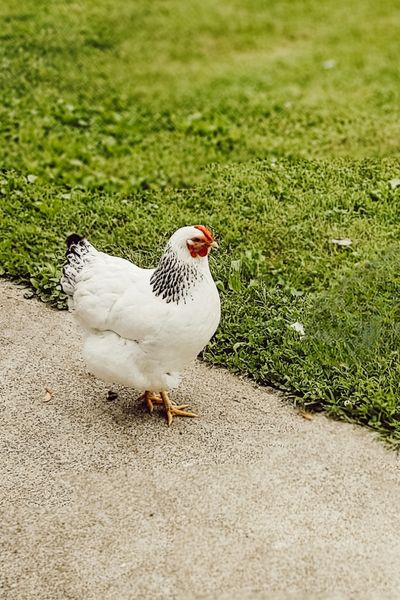Top 10 Chicken Predators That Will KILL Your Flock
Finding dead birds thanks to predators is definitely not a fun thing to deal with but is a fact of life for all chicken keepers. If you think you are going to predator-proof your chicken coop or living area let me lovingly burst your bubble and tell you that you will do everything you think you can and there will be some pesky little critter that will find a weak point in your set up and get in.
On top of that, you would have to never let your chickens out of the coop or a COMPLETELY closed-in chicken run.
Most Common Types Of Predator Activity
There are several signs of predator activity that you can look out for.
- Feathers (that are not just from your chicken’s sheading) or eggshells scattered around the coop.
- Unusual disturbances in the chicken coop or run.
- Your chickens sound like they are alerting to something.
- Or evidence of digging or burrowing near the chicken’s enclosure.
Paying attention to these signs can help you identify potential predators and take necessary precautions to protect your flock.
Ok let’s go a little deeper into the most common issues you will have with predators.
Free Farm Goal Planner!!!
➡️Get my proven system for choosing your farm goals so you don’t get burnt out.
If You Are Missing Eggs or chicks
If you find that your eggs or baby chicks are missing, there are a few potential predators to consider.
- Crows.
- Skunks
- Snakes
- Rats
- Opossums
- Coyotes
- Foxes
- Birds of prey tend to target the smallest members of the flock first… the baby chicks.
Unprotected nests are easy targets for these predators, so it’s important to be on the lookout for signs of disturbance or consumption.
As listed above signs of disturbance can include scattered nest materials, broken eggshells, or feathers scattered around the area. If you notice any of these signs, it’s likely that a predator has been snooping around.
Consumption of eggs or chicks may leave behind evidence such as animal tracks, droppings, or evidence of digging near the nest.
It’s important to take preventative measures to deter these predators and protect your nests. This can include using wire mesh or other barriers to cover nests, placing decoy eggs or predators to deter predators, and keeping vegetation trimmed to reduce hiding spots for predators.
By being vigilant and taking steps to protect your nests, you can help ensure the safety of your eggs and baby chicks.
If Your Chickens Are Missing The Head
If you find that your chickens are missing their heads, it is very likely a hawk. While other animals can do similar damage these are the most likely candidates.
With hawks tending to attack during the day you have to make the decision if keeping your chickens closed up is what you want to do or you just have to be aware that you are going to lose a few if you let your chickens free range.

Make sure to read this post that has lots of tips to help you learn how to keep hawks away from chickens.
Missing limbs and midsection/chest is eaten
In my experience, a missing midsection has turned out to be a raccoon first then a bird of prey. The difference between the two is that the birds will pluck their kill while the raccoons just dig in.
So if you find tuffs of feathers or the meat looks pulled most of the bones left in tacked instead of chunks taken you can probably assume it’s a hawk.
Dead Birds With Hardly Any Damage Or Blood
This is very likely a weasel. They also tend to kill large amounts of birds and leave most of them. They are very good at killing their predators with one bite usually around the neck.
Weasels are also known for attacking birds and causing internal organ damage. Evidence of weasel attacks may include puncture wounds and internal hemorrhaging with very little feathers torn out.
The back of the neck is opened up
Skunks and opossums are messy killers and often leave behind torn feathers, scattered body parts, and bite marks on the bird’s body.
In my experience, they won’t go after larger birds over 5 pounds or so but they love to go after young birds that aren’t fully grown or skilled yet.
I have had skunks kill the bird then open up the neck and often drink the blood. Opossums will do this sometimes but are more likely to go after chicks or eggs.
When examining birds found dead, it is important to look at the type of injury in order to determine what animal caused this issue so you can prevent it next time.
Common Chicken Predators
Common predators can vary by location and environment, so it is essential to have a basic understanding of the creatures that may pose a threat in your area to your flock. By being informed about these predators, you can take necessary precautions to protect your chickens from them.
Raccoons
Raccoons are number one on the list because they are so plenteous in almost any type of terrain. They will continue to come back until you get rid of them.
Raccoons are intelligent and agile predators that pose a threat to chickens. Known for their cunning behavior, raccoons use their dexterity to open coop doors and find ways to access chickens.
Raccoons leave distinctive track and scat patterns, with their tracks showing five toes on both the front and hind feet, and their scat resembling that of a small dog. Signs of a raccoon attack on chickens include puncture marks on the birds and partially consumed carcasses.

Preventing and protecting against raccoon predation involves securing chicken coops with latches and locks, reinforcing fences and coop walls, and installing motion-activated lights and alarms. And even adding chicken wire around areas that raccoons could get their small fingers into.
While you never want to leave your chickens out at night you might think that your chickens are safer sit up in trees or on a pole of some kind but that is not the case raccoons can climb almost anything and pull your chickens down.
Skunks
Keep in mind that skunks are not agile predators they don’t balance or climb well but they will dig and invade nests that are on the ground or easy to get to.
Skunks don’t tend to attack large adult birds they often go for the eggs or chicks. But if your backyard chickens are under 5 and 1/2 lb they will sometimes kill them and open up the back of the neck as mentioned above and drink the blood or eat a small amount of the chicken often in the upper part of the body.
To prevent skunks from causing harm to your chickens and their eggs, it’s important to reinforce the bottom of the coop to prevent them from digging underneath.

Additionally, laying a hardware cloth skirt around the outside of the coop can also help deter skunks from gaining access.
Another tip is to keep baby chicks inside the coop until they are more capable of protecting themselves from potential predators like skunks. To further deter skunks from making the coop their home, it’s important to keep the area clean and free of any potential food sources, such as leftover chicken feed.
By following these best practices, you can help protect your chicken coop from skunks and ensure the safety of your chickens and their eggs.
Hawks
Hawks are agile and powerful birds of prey that are known to target poultry flocks as a source of food. The most common hawk species that prey on chickens include Red-tailed Hawks, Cooper’s Hawks, and Sharp-shinned Hawks. They are known for their keen eyesight, rapid flight, and sharp talons used for hunting.
Hawks typically prefer to hunt in open areas such as fields and meadows, but can also be found near woodlands and forests. They often use a “sit-and-wait” hunting tactic, perching in a high vantage point and scanning the area for potential prey.
If you suspect that a hawk has preyed upon your chickens, look for scattered feathers, and missing heads from the carcass.
To deter hawks from targeting your flock, consider using scare tactics such as hanging shiny objects, using predator decoys, or providing cover and hiding spots for your chickens.
One key difference between hawks and eagles in terms of their behavior towards chickens is that eagles are less likely to target domestic poultry due to their preference for fish and carrion as their primary food sources.
By understanding the behaviors and characteristics of hawks, you can better protect your poultry flock from potential predation.
Make sure to read this post to help you find more ways to deter Hawks from your chickens
Weasels
Weasels are small, sleek mammals known for their agility and cunning hunting abilities. They are typically 7-12 inches in length, with long, slender bodies and short legs and can squeeze through amazingly small holes.
Weasels are skilled hunters, able to take down prey larger than themselves using their sharp teeth and agility. They are also known for their habit of killing chickens, often doing so for fun rather than for necessary food.

We personally have lost an entire flock of a dozen birds to one weasel. He bit the necks of all the birds killing them with barely any other bodily damage.
The best way to keep these critters out is to have chicken wire with VERY small holes around the base of your chicken coop. Keeping them from getting to the wood and opening up a corner which is what the weasle did with ours.
Opossums
Opossums are known to be a threat to chickens, but there are effective methods for protecting your flock from attacks.
One of the best ways to keep opossums away from your chickens is by securing your coop with sturdy fencing and making sure to lock it up at night. Opossums are more on the lazy side and would rather have an easy meal instead of something they have to work for.

It’s important to be able to recognize the signs of opossum presence. Keep an eye out for small, wet feathers or a messy nesting space, as these could be indications that an opossum has been nearby. Additionally, understanding the behavior and hunting patterns of opossums can help you identify whether they are a threat to your chickens. Opossums are known to be nocturnal creatures and are adept at climbing, so be sure to check for tracks around your coop and in nearby areas.
Domestic Dogs
Domestic dog breeds that have high hunting instincts are going to be the most likely candidates. Breeds that are not bred for hunting don’t tend to be an issue. My Saint Bernard couldn’t care less. But my dumb 6-pound female dachshund will chase them if she sees an opportunity. The only reason she doesn’t kill them is because she is half their size and she knows the chickens will whoop her butt if they get the chance.
Domestic dogs don’t always kill chickens but they can cause a lot of damage.
Domestic dogs are opportunistic hunters and may attack chickens during the day or night. — Their impact on backyard flocks can be devastating, as they have the ability to kill multiple chickens in a single attack.
To protect chickens from domestic dogs, it’s important to keep them in a secure coop or run. Reinforcing fencing and using motion-activated lights or alarms can help deter dogs from approaching the flock.
Dog Breeds Or Breed Groups That You Will Have Issues With
- Herding dogs (because they are bred to be the boss of whatever they are herding. It’s their way or the highway. So this can lead to chickens getting killed because the dog is bred to nip or bite at that animal that is not listening to it.)
- Bird dogs (obviously)
- Gun Dogs
- Australian shepherds
- German Shepherds
- Hounds
- Labs
- Golden retrievers
- Doodles (anything mixed with a poodle. Poodles are a hunting dog)
Understanding the behavior and characteristics of domestic dogs as chicken predators can help poultry owners take appropriate measures to keep their flocks safe.
Coyotes
Coyotes are highly adaptable animals that are found throughout North America, from the forests of the east to the deserts of the West. These intelligent creatures are known for their curious and elusive behavior, often preferring to hunt and travel during the night.
They are most likely to kill the chicken and take it with them. They aren’t going to leave it unless they were interrupted.
Coyotes are primarily carnivorous, with their diet consisting of small mammals, birds, reptiles, and even insects. They are skilled hunters, using their keen sense of smell and hearing to track and catch their prey. In the eastern United States, coyotes have been known to adapt to urban and suburban environments, scavenging for food in garbage cans and hunting small pets.

Coyotes are known for their distinct howl, which serves as a way to communicate with other members of their pack. They are often solitary animals, but will form packs for hunting and raising offspring.
Identifying coyote tracks and scat can be an important skill for those living in areas with coyote populations. Their tracks can be distinguished by their elongated shape and the presence of claw marks. Coyote scat is typically tubular and filled with hair and bone fragments.
Foxes
Chickens are often at risk for attacks from foxes, so it’s important to take measures to protect them. To start, reinforce the chicken coop by using strong materials like wire mesh and secure fencing to prevent foxes from gaining entry. It’s also a good idea to install a trail cam to keep an eye on the coop and identify any potential entry points that need to be addressed if you are having issues.
Again foxes are going to kill the bird and take it with them.

Regularly check the perimeter of the coop for any signs of damage or weakness in the fencing, and make sure to secure any potential entryways that a fox could use to access the coop. This could include filling in holes, repairing broken fencing, or adding additional layers of protection to prevent foxes from getting inside.
Snakes
Snakes can pose a threat to the safety of your small chickens but are most likely to go after the eggs or young chicks.
One effective method is to use hardware cloth to cover the runs and housing of the coop, as this will prevent snakes from gaining access to the area. Additionally, consider raising chicks in an indoor brooder until they are old enough to be moved out to the coop, as this will minimize their exposure to potential snake encounters.
To identify snake presence, look for shed skins and ‘slither paths’ around the coop. If you notice these signs, consider introducing guineas to your flock, as they are known to be potential snake deterrents.
By implementing these preventative measures and staying vigilant for signs of snake presence, you can help protect your chickens from harm. Be sure to regularly inspect the coop and surrounding area for any signs of snakes, and take appropriate action to remove or deter them if necessary. With the use of hardware cloth, an indoor brooder, and potential guinea deterrents, you can help keep your flock safe from snakes.
Owls
They are known for hunting at night, making them skilled nocturnal hunters. They often target sleeping chickens and other small animals, using their stealth and sharp talons to swiftly capture their prey. It is important to note that owls have been found to decapitate their victims as a method of killing and consuming their prey.
Great horned owls, in particular, are known for their physical characteristics that make them formidable hunters. They have large talons that can easily grip and carry off adult chickens.

We personally have had owls kill 12-pound heritage breed turkeys because we made the mistake of letting them roost in the trees at night instead of making them go in the coop. It took us 4 nights of watching for that sucker before we got him. He could see us AT NIGHT IN THE HOUSE.
Owls have a distinctive hooting sound that they use for communication and identifying territory. It is also possible for owls to cache excess prey, storing it in hidden locations for later consumption.
Bobcats
Bobcats are small, solitary, and elusive creatures that can be found in a variety of habitats, including forests, swamps, deserts, and even suburban areas. They are skilled hunters, with a diet consisting mainly of rabbits and hares, but also including birds, rodents, and occasionally small deer. Bobcats are known for their stealthy hunting patterns, often relying on their excellent vision and hearing to stalk and ambush their prey.

One way to identify potential bobcat presence is by looking for their tracks and scat. Their tracks resemble those of a domestic cat, but are larger, with retractable claws that leave a distinct print. Their scat is cylindrical and often contains the remains of their prey. Bobcats also have a habit of marking their territory with urine, which can help in determining their presence in an area.
Don’t Know Where To Start With Your Backyard Farm?
Its time to start a backyard farm that fits YOUR dream lifestyle, Backyard Farm Foundation is the answer to setting a clear plan and achievable goals for starting your dream backyard farm or homestead.
ONLY $9!!!!
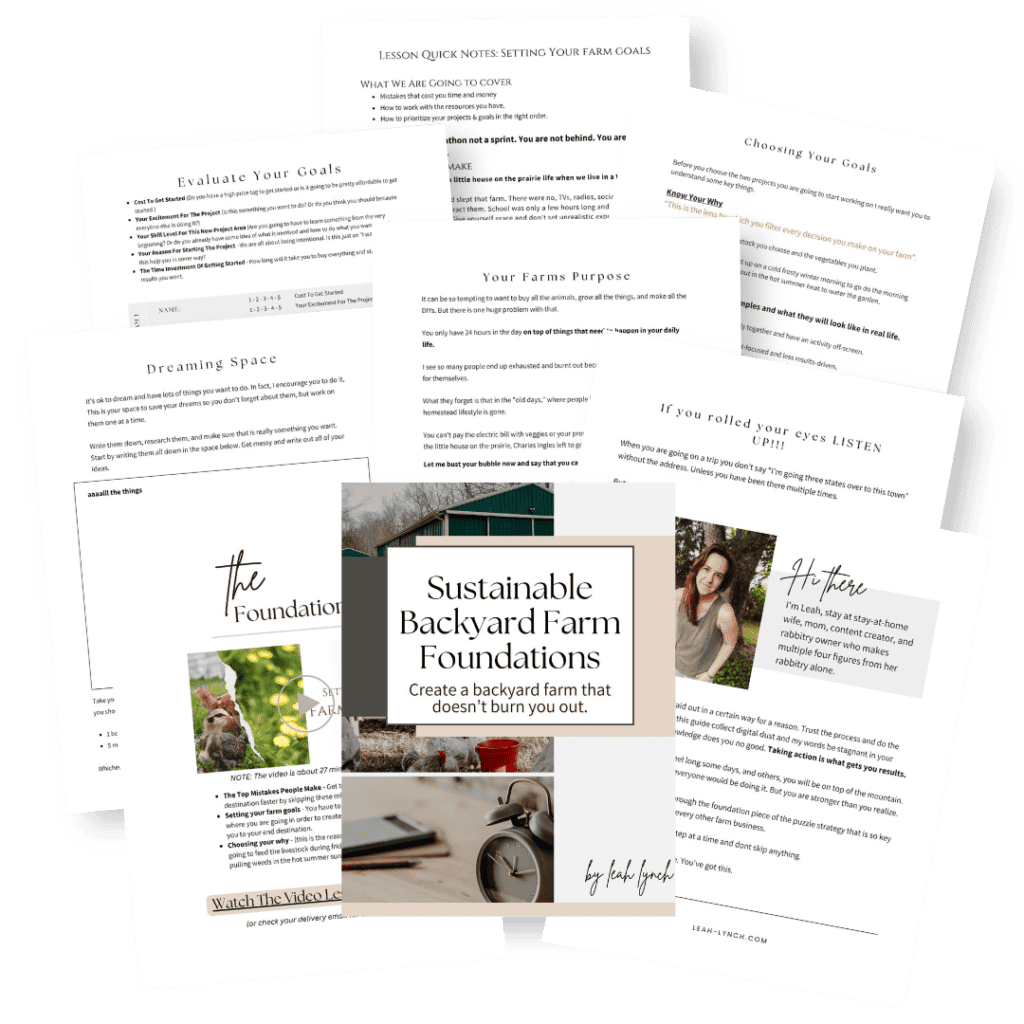
How To Prevent Preditors
When it comes to protecting your chickens from predators, it’s important to be proactive and take the necessary precautions to keep your flock safe. Here are the top 10 chicken predators and how to prevent them from attacking your chickens.
1. Coyotes – Secure your coop with hardware cloth and make sure the perimeter is well-fenced. Consider adding motion-activated lights or a guard dog to deter coyotes.
2. Foxes – Install a covered chicken run (they can easily scale a fence) to give your chickens a safe outdoor space, and secure latches on all coop doors.
3. Raccoons – Use hardware cloth to cover all windows and vents, and make sure the coop is tightly sealed to prevent raccoons from breaking in.
4. Hawks – Cover the chicken run with netting or wire to protect your flock from aerial predators.
5. Dogs – Ensure your coop is securely fenced and consider adding an electric fence for added protection.
6. Snakes – Use hardware cloth to cover the floor of the coop and run to prevent snakes from slithering in.
7. Owls – Add a secure roof to the chicken run to keep owls from swooping in.
8. Skunks – Keep food and waste secured to avoid attracting skunks to your coop area.
9. Weasels – Use hardware cloth with VERY small openings to prevent weasels from gaining access to your chickens. The weasel we had got in through a hole smaller than a quarter.
10. Black bears – Make sure your coop is well-constructed and consider using bear-proof latches to keep these large predators out.
To fully protect the chickens, it is important to address all possible openings and weak points in the pen.
One of the best methods for securing the chicken pen is to use strong wire mesh or hardware cloth to cover the entire pen, including the roof. This will prevent both raccoons and birds of prey from gaining access to the chickens. Additionally, make sure to secure all doors and openings with sturdy locks or latches to further deter predators.
Another method is to bury the wire mesh or hardware cloth at least 12-18 inches into the ground around the perimeter of the pen. — This will prevent raccoons from digging or burrowing their way into the pen.
Regularly inspect the pen for any signs of wear or damage, and promptly repair any weak points or holes to ensure maximum protection for the chickens.
It’s also important to remove any potential food sources near the coop, such as pet food or garbage, to discourage raccoons or opossums from frequenting the area. By understanding the behaviors and characteristics of raccoons as chicken predators, chicken owners can take the necessary steps to safeguard their flock.
By implementing these securing methods, chicken owners can greatly reduce the risk of predators accessing the pen and harming the chickens.

